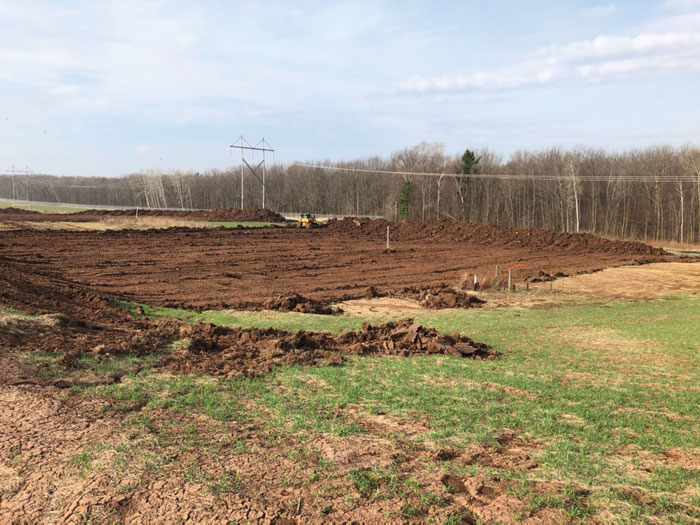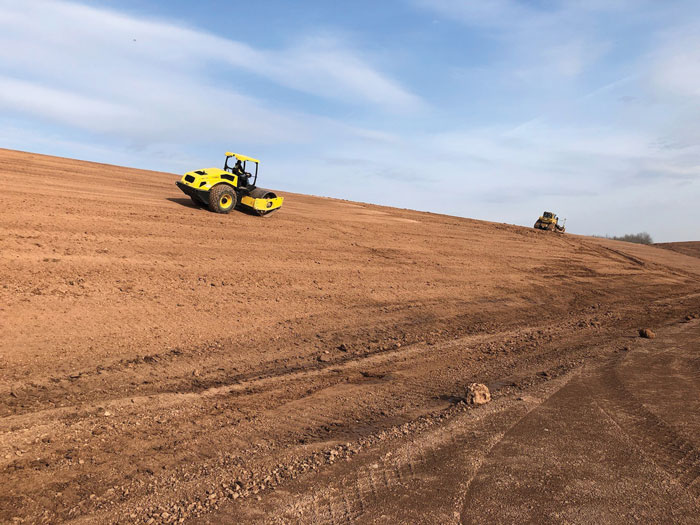It is not often that you see different government entities working collaboratively with each other. An excellent example of that is happening in Wisconsin with the focus on
recycling and waste disposal.
By Chad Doverspike
For the past 14 years, Brown, Outagamie and Winnebago counties (BOW) have worked together under a recycling and solid waste disposal agreement to share the costs of operating landfills and recycling facilities. The current BOW landfill is located in and operated by Outagamie County. Construction began last year on the next BOW landfill, which will be located in southern Brown County.

Siting and Planning
Brown County was able to identify an ideal location that had site conditions that far exceeded Wisconsin Department of Natural Resources (WDNR) landfill siting requirements. Planning began more than 20 years ago and involved consideration of several potential parcels of land, mostly in the southern portion of the county. The process eventually led to the property in the town of Holland, where the landfill construction is now underway. The site features everything that is sought for landfill development—plenty of clay and great onsite soils.
Throughout the planning and design process, the Brown County Resource Recovery Department worked closely with government regulators including the WDNR. During the permitting process, the county has met or exceeded all environmental rules and regulations in the WDNR codes. These included an initial site inspection, a feasibility review to ensure that the land and environment were all up to code, as well as a plan of operations approval. Staff has also been in constant contact with the town of Holland and property owners near the landfill site to be sure that everyone was aware of what was happening with the construction process. Since the beginning, there has been a strong relationship with the surrounding farmers that has been maintained throughout the planning and construction process. Brown County Resource Recovery also established a Host Community Agreement with the town of Holland that keeps its residents informed and has programs, such as waste drop-off.

Actual construction of the Brown County South Landfill began in spring of 2020 with the first year of construction focusing on the movement of more than 850,000 cubic yards of soil. The 2021 portion of the project will include construction of a scale house, a maintenance building, an equipment storage building and construction of the landfill cell itself. One of the most important support structures is the leachate management system that is essential to the project.
Leachate Management
The leachate management system relies on a cooperative effort with NEW Water, the brand of the Green Bay Metropolitan Sewerage District, as a key part of the project. NEW Water serves communities and industries throughout Northeast Wisconsin, collecting and treating an average of 41 million gallons of wastewater each day. The partnership with NEW Water involves sending leachate to the sewerage facility and, in return, NEW Water sends its sludge and ash to the landfill for disposal.
The leachate collection system at the South Landfill includes a 160,000-gallon tank to where the leachate is pumped. From there, a pumper truck collects the leachate and transports it to the East De Pere Industrial Park site where it is then piped to the De Pere Wastewater Treatment Plant, which is part of NEW Water. Weekly leachate testing is conducted by Brown County to be sure that the leachate meets or exceeds NEW Water’s acceptance criteria. NEW Water also conducts quarterly sampling to compare the results with the 52 samples that Brown County Resource Recovery has taken. This is just one of the many ways the landfill is making sure the environment remains safe. All results are subsequently shared with the WDNR.
Since the start of construction, environmental safety has been a top priority. In the planning, design and development of the leachate management system, Brown County Resource Recovery has been sure to check every box for safety.

Middle: Northeast corner of Brown County Landfill.
Right: Northeast side of Brown County Landfill.
Lining
The Brown County South Landfill is a subtitle D landfill. As such, the design features 4-feet of compacted clay and 6-inch lifts across the 26-acre landfill cell. As each layer of clay was installed, density tests were performed to ensure there were no air voids between the clay lifts. Hundreds of tests were performed on the clay base liner and side slopes to ensure that the clay liner was installed properly.
Once the clay is installed, a 60 mm LLDPE liner will be installed. The liner is placed in 13-foot by 500-foot sections that are heat seamed over one another to create one large impenetrable plastic liner across the entire clay base liner. Along the way, each seam is pressure tested to ensure the synthetic liner seams do not leak.
Prior to construction, Brown County was required to conduct background testing on surrounding private wells and monitoring wells drilled onsite to identify existing groundwater conditions. While the landfill is in operation, the team will conduct quarterly tests on the upgradient and downgradient wells located near the landfill.
Giving Back
In addition to the safety tests and practices that Brown County Resource Recovery has in place, the South Landfill will also give back to the environment. In the areas surrounding the landfill cell, prairie grass and wildflowers were planted on approximately 20 acres in 2020 to create natural habitats for birds, butterflies and other wildlife. The plants will also help with infiltration of rainwater to reduce stormwater runoff and flooding.
Brown County Resource Recovery will also continue to work with area land conservation groups to be sure the natural habitats at and near the landfill remain healthy. It is also seen as a way to educate the public on how to effectively reduce, reuse and recycle. With an increased emphasis on recycling and reducing waste, the need for landfills will be reduced. | WA
Chad Doverspike is Assistant Director for Brown County Resource Recovery in Wisconsin. The role of the Brown County Resource Recovery Department is to meet the solid waste disposal needs of local communities and businesses through methods which are environmentally sound and economical. For more information, visit www.BrownCountyRecycling.org.
